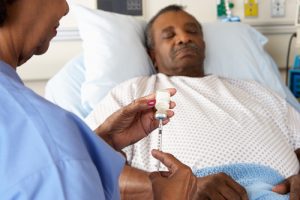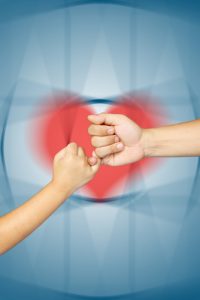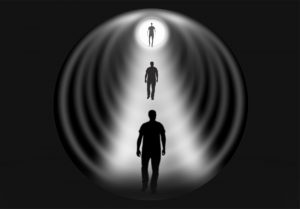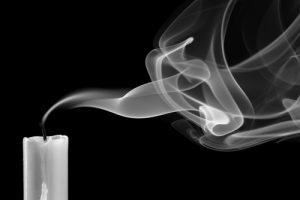Upon a worrisome visit to the doctor, eventually in one’s life, one will come to the grips of existential crisis, where one must deal with a life or death illness, or hear the terrifying words, that one is dying. For some, these words come earlier in life, for many, later, and for some, death can come like a thief in the night. Those who are granted the ominous warning are given a blessing and a curse. A blessing to prepare oneself and others, to put things right and affairs in order, but also a curse in knowing the clock is fearfully clicking to a deadline that is unavoidable. Please also review AIHCP’s Grief Counseling Certification.
There is a myriad of emotions and feelings that one goes through when a terminal illness is announced. An existential reality of one’s own finite nature is made rawly known to the intellect. What was once considered an abstract but real concept suddenly becomes personal and intimate. One comes to the conclusion that death will concretely and definitely happen. It is no longer a future imaging of how but becomes a concrete concept of now and here. Please also review AIHCP’s Grief Counseling Courses

How one perceives life and existence itself plays a large role in the existential dread of this bad news. Levels of fear and anxiety are measured and varied in regards to one’s own existential beliefs. Someone who is profoundly convinced of life after death and molded by an undying faith, may feel a sense of fear, but also a sense of hope and reward, while one who holds empiric and only observable phenomenon as a basis for existence, may feel a deeper dread of creeping into nothingness. Some individuals are less attached to the temporal reality and are able to sense a stronger sense of purpose and peace beyond the observable world. Those of this deeper faith, whether rightly placed or not, will react quite differently to the bad news of approaching death than one of lesser or no faith.
Fear of the unknown still exists even if in the smallest grain to the faithful. So naturally, the evolutionary push to exist when challenged will spring forth within the soul a type of fear. The fear of the unknown still exists for those of faith, but the levels of fear that may surround one who is terminally ill, differs greatly in intensity. One of faith upon the announcement of bad news will definitely still feel a sense of fear and be forced to reckon with the unknowable. This type of fear is a natural reaction. Since one’s conception, the urge to exist is programmed within the body. The urge remains a strong driving force.
For those facing death, a general fear may also be replaced with a more acute fear of the now. Fear of sharing this news, or keeping it to oneself. Fear of the disease itself and what this particular disease may do to one’s body during the final phases. Oneself may fear the pain, the treatments, the side effects and quality of life or even the fear of leaving family and children without one’s guidance and protection. Obviously these are grounded fears to one who has come to a firm acceptance. While initially one may be swarmed with questions and options, one may soon find oneself consumed with collecting as much information about the disease or condition, understanding pain management or reviewing various extraordinary measures to preserve life. Understanding the enemy can sometimes qualm some fear and even give a glimpse of hope. One finds oneself with more power over fear when one faces the enemy across oneself. Some individuals face the enemy, while others choose to live in fear and hide from it. One in the end accepts how they will face death, either with a strong will, or a broken one. Accepting death but facing it with a strong will despite fear is the true definition of courage.
Due to this natural fear of death, even among the most spiritual and religious, one when faced with this terrible thought will undoubtedly deny it. Elisabeth Kubler Ross who worked with the terminally ill observed this natural human reaction to reject bad news initially. Something so frightful at first refuses to be processed by the brain. Bad news is met with an equally powerful rejection of it. As one receives this bad news then, one will probably initially reject the sentence of death. How long this reality takes to sink in may differ among some. Some may seek additional medical opinions, until all options are removed. Others will proceed with elaborate alternative therapies in hope of a cure. For some, hope can be a evolutionary device for survival. It definitely is not something to rejected but when hope blinds oneself to such an extent that is masquerading as denial, then it can become problematic to oneself and prevent oneself from dealing with the reality of death.
Death itself is a process that many run and flee from. Evolution to survive engrains this feeling into oneself. Yet, if one stops and realizes that death is a process one must face, then maybe one can allow oneself the process of dying properly. Many cultures value a good death. A good death is as part of life as birth. Dying well, handling oneself well and maintaining dignity is critical to the last chapter. Long term denial strips one the opportunity to handle affairs, repair relations, prepare the mind body and soul and live the final chapters. So, absolutely, upon terminal diagnosis, one will feel fear and denial and this is OK. What one does not wish to continue to entertain is a long term denial. Hope should not be squashed, but denial should not be masked as hope either.
Oneself may think if one ignores the horrible diagnosis that it will go away. For this reason alone many in denial, may keep a terminal diagnosis as a secret from friends and family. One will ignore checkups and important procedures and postpone wills and other critical business at hand. These types of secrets are part of denial at its core. Oneself may feel as if one is sparing others grief, but this type of internalization of bad news only denies the reality and creates less time for others to express love and accept reality.
Following this diagnosis, other emotions may erupt within oneself. As Kubler Ross points out in her famous stages of grief, one experiences far more than denial upon the initial announcement of bad news. One will experience also a range of emotions with the first minutes or days or weeks or months. Anger is a powerful emotion that may erupt. One may find oneself angry at God, or others. One may feel one’s life has been stolen or cut short. Others may become jealous of others who were granted better health. Again, in grief, one cannot deny these initial feelings, but understand them and see where this anger comes from. While one may feel like they may be treated unfairly, one cannot allow anger to turn into envy and become caustic within one’s very being. There is little time left with a terminal illness and negative emotions and negative energies while acknowledged should not be permitted to fester, unless one wishes for the soul to also suffer with the body.
With the lamenting of death, some will feel greater melancholy. How long one grieves the impending loss of life, like fear itself, varies upon the spiritual nature and resilient nature of oneself. One should clearly come into contact with the sadness of loss of one’s physical life, but again, like anger, it is important to evaluate the emotion within its proper degree. Some may go into a deep depression or no longer wish to live. Oneself may recede to the shadows well before the date of death. When sadness of this level overtakes oneself, then one must realize that the diagnosis is now taking more life than it originally took before. The intense grief is taking what is left. It is stealing the final days of sunshine, family memories and expression of love.
With such deep emotions, sometimes it may be good to express these feelings. Some may find solace in their family and friends, but others may feel a fear to cause them more pain. While this is noble, in many ways, family and friends wish to help one carry this cross. Oneself should not feel isolated to the point where one has none to share the fear and emotions of dying. An additional option is finding others in support groups or other social venues where others of like diagnosis can meet and share emotional fears and acute physical symptoms. A good balance between sharing with family and other like diagnosed individuals can play a great tool in helping one face the emotions of one’s diagnosis.
Kubler Ross pointed out that many may also bargain. As if one has a final say with the grim reaper, oneself may feel the need to negotiate with the angel of death. This sense of powerlessness is lessened with bargaining and creates an illusion as if oneself can negotiate the final days. Oneself may ask, if I can only have an extra year, or have only this procedure instead the other procedures. This illusion of power and control over death is merely another way oneself may try to create one’s own ending. Instead of focusing on “ifs”, oneself should focus on the realities and what can be done within the time given. Less time bargaining and more time doing is a far better way to accept the angel of death.

Upon this terrifying news of one’s own impending death, one can react in a multitude of ways, intellectually and emotionally, but while no emotion is initially to be ignored, there is clearly a better way to face death. It is up to you, the person facing the terminal illness, how you will face the final chapter in your life and no-one else but you can author that chapter.
If you would like to learn more about death and dying, or about AIHCP’s certification programs in Grief Counseling and Pastoral Thanatology, then please review AIHCP’s online programs. The Grief Counseling Certification and Pastoral Thanatology Certification Programs are both online and independent study and open to qualified professionals seeking a four year certification.
Additional Reading
“10 Practical Tasks to Help You Deal With a Terminal Illness” by Chris Raymond
“Terminal Illness : What To Expect” from Mantra Care
“Dealing With Terminal Illness” from the Charity Clinic







